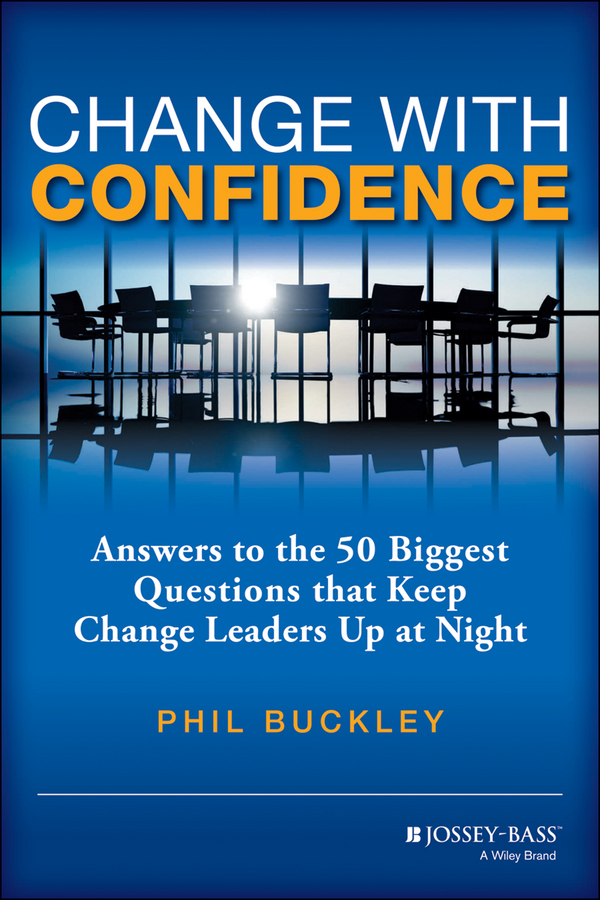Guest Post by Phil Buckley
Most people would agree that change isn’t easy. Many people, however, seem surprised when people don’t embrace it. We are creatures of habit, so it seems natural that most people will have difficulty giving up things they are comfortable with for the unknown.
A leader once told me that he had let his team know that resistance to a new structure would not be tolerated. After speaking with his team members, I confirmed that he had successfully driven challenges underground along with advice on how to make the change more successful. Unfortunately, he had also lost the trust, support and engagement of the people who were tasked with making the change. It didn’t go well.
When people question a change, they are demonstrating an interest in the business and their role in it. They may not understand the reason for the change and the benefits it will provide, or may have a different perspective based on facts and experiences that are unknown to the leader. Either way, resistance is the beginning of a conversation about what is best for the business. It also is an opportunity to energize people about a new and exciting future.
Here are five ways to overcome resistance to change:
- Ban “resistance” from your vocabulary. Language is a powerful tool that can bias your thoughts and behaviors. It is your role to help people “climb the rope” to the future versus pulling it in the wrong direction. Using positive language is an important starting point. Phrases such as “addressing concerns” and “discussing changes to routines” help position discussions in a positive light that will reduce tensions people may be experiencing.
- Ask for concerns when describing the vision behind the change. It is better to know what the areas of concern are versus making assumptions about what they may be. People know best what is on their minds and demonstrating that you value their views is the first step to influencing them.
- Identify “early adopters” who support the change. These people are advocates for the new ways of working. They are also peers who speak the same language as their team mates. Ensure they participate in forums about the change so their voices can be heard.
- Build in as much certainty as you can—what is going to happen and when, what aspects will change and what will stay the same? People are more likely to feel stressed when they don’t feel in control of their environment. When people don’t know the details they often assume the worst possible outcome. You can reduce stress levels and fear by reducing the unknown. Share details freely and ask for input on the ones that aren’t yet defined.
- Share how you will prepare people to take on new ways of working. People usually react positively to a well thought out plan to transition to new routines. They also react negatively to little or no support. Make sure there is sufficient help available, that managers have all the tools they need to assist their team members and people know the investment being made to help them.
Socrates said that “The secret of change is to focus all of your energy not on fighting the old, but on building the new.” The leader’s role is to help people take on new ways of working that will create a better future. When people’s concerns are positively addressed, most will do their part in making it come to life.
About the Author: Phil Buckley
 With 20-plus years of experience developing and executing change strategies for global businesses, Phil Buckley has managed 28 large-scale change projects — including the $19.6 billion Kraft Foods acquisition of Cadbury. Having the confidence to tackle any change project is a quality every leader should possess. In his new book, Change with Confidence: Answers to the 50 Biggest Questions that Keep Change Leaders Up at Night
With 20-plus years of experience developing and executing change strategies for global businesses, Phil Buckley has managed 28 large-scale change projects — including the $19.6 billion Kraft Foods acquisition of Cadbury. Having the confidence to tackle any change project is a quality every leader should possess. In his new book, Change with Confidence: Answers to the 50 Biggest Questions that Keep Change Leaders Up at Night (Jossey-Bass), Phil Buckley — senior change management professional — highlights the 50 most pressing questions that keep leaders up at night.
Image credit: shutterstock/69870361
Disclosure: some of the links in this post are affiliate links, which means if you click the link and make a purchase I may receive a commission.

Leave a Reply